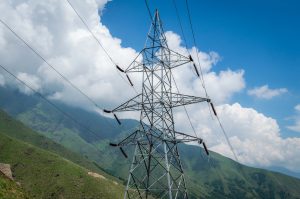On November 15, a trilateral power-sharing agreement between India, Nepal, and Bangladesh came into effect. Under the agreement, which was signed on October 3, hydropower-rich Nepal will export 40 MW of electricity to energy-starved Bangladesh through the Indian power grid.
Nepal and Bangladesh do not share a border; hence, India, which connects the two countries, is part of the transborder power trade initiative. The project, which was jointly inaugurated by ministers from the three countries, is a historic milestone in regional cooperation.
It is the first trilateral hydropower project in South Asia.
India, Nepal, and Bangladesh are also collaborating to develop the 683 MW Sunkoshi-3 hydropower project. While the dam is located 60 km from Kathmandu in Nepal, the project will be jointly developed by conglomerates and developers in the three countries in cooperation with the three governments.
According to media reports, relations between India and Nepal, and between India and Bangladesh, are not in the best of health.
New Delhi is said to be upset with Nepali Prime Minister K. P. Sharma Oli and has therefore not extended him an invitation to visit India. India’s relations with Bangladesh are said to have soured after the fall of the Sheikh Hasina government. Indian Prime Minister Narendra Modi is reported to have “rejected” a request from Bangladesh for a meeting with Chief Adviser of the Interim Government Muhammad Yunus on the sidelines of the recent United Nations General Assembly summit in New York.
Their difficult relationships notwithstanding, cooperation among these countries on multilateral projects is making progress on the ground. The recent launch of the trilateral power supply agreement between Nepal, India, and Bangladesh is an example.
India-Nepal hydro-power sharing goes back several decades. Last year, the two countries signed agreements providing for India’s purchase of 10,000 MW of hydropower from Nepal in the next 10 years.
There has been progress in the India-Nepal fuel supply connectivity too. On September 10, 2019, the two countries reached a historic milestone when they inaugurated a 69-kilometer-long oil pipeline from Nepal’s Amalekhunj to India’s Motihari. The $45 million India-funded pipeline is the first cross-border oil pipeline in South Asia. India, which is landlocked Nepal’s sole supplier of fuel, previously transported oil to Nepal only through tankers. The oil pipeline has now enabled Nepal to import fuel at a lower cost. In effect, the India-Nepal pipeline will save Nepal about $8.7 million annually in transport costs for fuel.
Intra-South Asia connectivity is among the worst in the world. Bilateral tensions, anti-India sentiments, and apprehension of the smaller countries that India will dominate their far smaller economies have stood in the way of improving connectivity.
As a result, South Asian countries suffer from poor “HAT” connectivity, where H stands for hydropower, A for aviation, and T for transit and tourism.
Transborder hydropower projects are few and far between in South Asia and the full potential of bilateral and trilateral cooperation between hydropower-exporting countries like Nepal and Bhutan and importing countries like India and Bangladesh is yet to be tapped.
As for aviation, flying from Kathmandu in Nepal to Thimphu in Bhutan — the two countries are separated by a narrow strip of Indian territory — is more difficult than flying from Kathmandu to Thailand. There is no direct flight between New Delhi and Islamabad. Travelers have to take flights via cities in the Gulf.
Transit travel is not easier either. Bangladesh is less than half an hour’s drive from Nepal’s eastern border. However, in order to travel to Bangladesh, a Nepali traveler from Far East Nepal has to go to the Bangladesh embassy in Kathmandu, which is a 15-hour-long drive away, to get a visa. To come to Nepal from Bangladesh via India, there are troubling single entry or double entry issues, which are hurting potential tourism connectedness in the region.
Nepal’s hydropower exports to Bangladesh and India’s oil exports to Nepal via pipelines, are among the rare transborder connectivity projects in South Asia.
As the largest country in South Asia and the only one that shares borders with almost all the region’s countries, India is in a unique position to facilitate, even lead, HAT connectivity initiatives.
India’s recent efforts on the energy connectivity front vis-à-vis some of its neighbors indicate that it is keen to emerge as a hub for trading in electricity and petroleum products in the region. Besides, Nepal and Bangladesh, where it has stepped up power connectivity cooperation, India will supply liquefied natural gas (LNG) for Sri Lanka’s power plants. It is also working on an undersea transmission line for supplying electricity to the island nation.
However, such transborder power transmission arrangements are not always easy. India’s Adani Power has been supplying electricity to Bangladesh since April 2023. However, in the wake of the forex crisis and the political crisis following the resignation of Sheikh Hasina, Bangladesh has not been able to pay over $800 million in dues to Adani Power. Adani Power has cut supply by over 60 percent and says it will resume supply once Bangladesh begins to repay the outstanding amount. With post-Hasina bilateral relations in a state of flux, India seems unwilling to budge from its position.
Despite some visible irritants on the diplomatic and political fronts, voices in support of regional connectivity and cooperation are growing in all countries. Such cooperation is an important item on the agenda of private players. South Asian governments need to heed their demands and match their energy on the issue of regional cooperation.

































